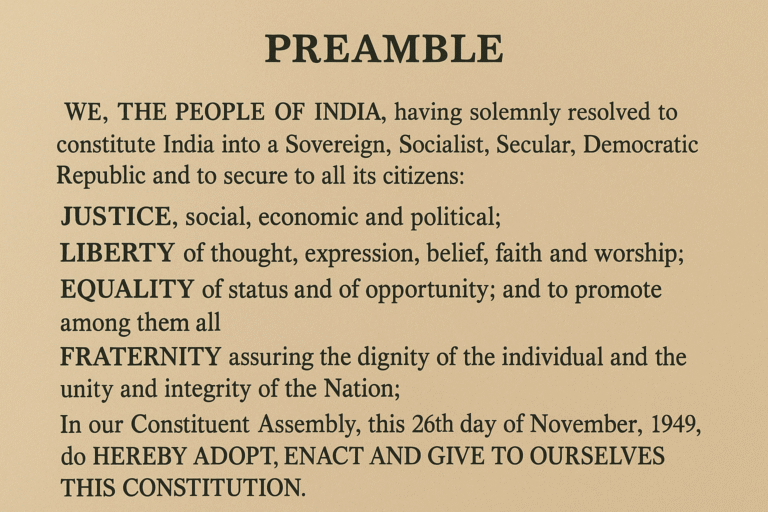🇮🇳 Part1 – Union and its Territory (Article 1–4)
🇮🇳 India at Independence (15 August 1947) At independence, India was a mixture of: 🧩 Initial Classification of States (1950 Constitution) When the Constitution came into effect on 26 January 1950, Indian territory was classified into 4 types of states: 🟥 Part A States (9) 🟦 Part B States (9) 🟩 Part C States (10)…


